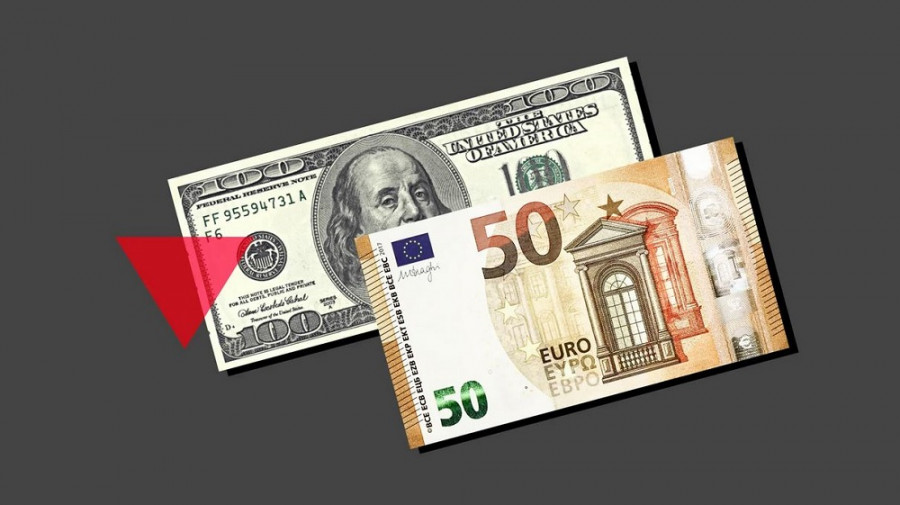The first week of March promises to be eventful, with significant developments anticipated for the EUR/USD pair. The U.S. will release key labor market reports and ISM indices, both of which are important indicators of economic growth. Meanwhile, the European Central Bank will hold its highly anticipated March meeting in Frankfurt. Typically, the first week of each month is both informative and volatile, and this particular week is expected to be no exception.
Monday:
During the European session, inflation growth data for the Eurozone will be released. According to preliminary forecasts, the consumer price index is expected to slow for the first time in four months, reaching 2.3% year-over-year. The core index, excluding energy and food prices, is also expected to decline to 2.5% after staying at 2.7% for five months. If the report meets forecasts or shows a weaker result, the euro will come under pressure, significantly ahead of the ECB meeting on March 6. While the outcome of this meeting— a 25-basis-point rate cut— is widely expected, uncertainty remains about the central bank's future policy path. This release will likely cause volatility in the EUR/USD pair, even if it aligns with expectations.

The ISM Manufacturing Index will be published during the U.S. session. This indicator has risen for the past three months, reaching 50.9 in January. However, in February, it is expected to slow slightly to 50.6. The index must remain above the 50.0 threshold for dollar bulls, indicating expansion. If it falls below this level, the dollar could face significant pressure. Conversely, the greenback will receive support if it stays in expansionary territory, even with a slight decline.
Tuesday:
The economic calendar for Tuesday is mostly quiet for the EUR/USD pair, aside from the Eurozone unemployment report, which is anticipated to hold steady at 6.3% for January, the same as December.
However, there is expected to be volatility due to the implementation of new tariffs. A 25% tariff on goods from Mexico and Canada, along with an additional 10% duty on imports from China, is scheduled to take effect. President Trump has indicated that he has not seen sufficient progress in controlling the flow of fentanyl into the U.S. When questioned about whether Mexico and Canada have met expectations in limiting drug shipments, he responded negatively. If Trump decides to postpone the tariffs again, potentially until April, the dollar may face downward pressure as risk appetite increases.
Wednesday:
The most important macroeconomic report of the day will be the February ADP private-sector employment report. Forecasts suggest weak job growth, with only 145,000 new jobs added. Since ADP data often correlates with Nonfarm Payrolls (NFP), a stronger or weaker report could impact the dollar accordingly.
Additionally, the ISM Services PMI will be released. It is expected to rise to 53.0, indicating growth. The dollar will react negatively only if the index unexpectedly drops below 50.0 into contraction territory. Otherwise, a slight decline or an increase will either be ignored or positively impact the greenback.
Thursday:
On Thursday, the results of the ECB's March meeting will be announced. Most analysts expect another rate cut of 25 basis points, bringing the rate down to 2.75%, following a similar cut in January. The market anticipates further cuts, with rates potentially reaching 2.0% by the end of the year.
Since the rate cut has already been factored into prices, traders will focus on the ECB's statement and Christine Lagarde's remarks. If she suggests a further rate cut in April, the EUR/USD pair could experience significant downward pressure. In her February speech to the European Parliament, Lagarde noted that inflation is easing and that the effects of rate cuts are "starting to take effect," while also warning about trade risks. She emphasized a cautious, data-driven approach to future policy decisions.
The tone of her statements and comments will likely depend on Monday's Eurozone inflation report.
Friday:
On Friday, March 7, attention will be focused on the U.S. labor market report for February. Predictions indicate that the unemployment rate will hold steady at 4.0%, while nonfarm payrolls (NFP) are anticipated to increase by only 156,000. The dollar is likely to gain strong support if job growth exceeds 200,000. Furthermore, wage growth will be an important consideration—average hourly earnings rose to 4.1% in January, and analysts expect a similar rate for February. If wage growth surpasses expectations, the dollar could strengthen significantly.
Conclusions:
The first week of March is expected to be highly informative and volatile for the EUR/USD currency pair. Last Friday, the pair closed at 1.0377, reflecting a general strengthening of the dollar.
For the downward trend to continue, sellers need to push the price below the 1.0360 level, which is the Kijun-sen line on the daily chart. If they succeed, this could lead the price towards 1.0340, the lower boundary of the Kumo cloud on the daily chart, and potentially down to 1.0300, which is the lower line of the Bollinger Bands on the same timeframe.
On the other hand, for an upward reversal to occur, buyers must break through the 1.0450 resistance level, which aligns with the upper boundary of the Kumo cloud on the daily chart.





















